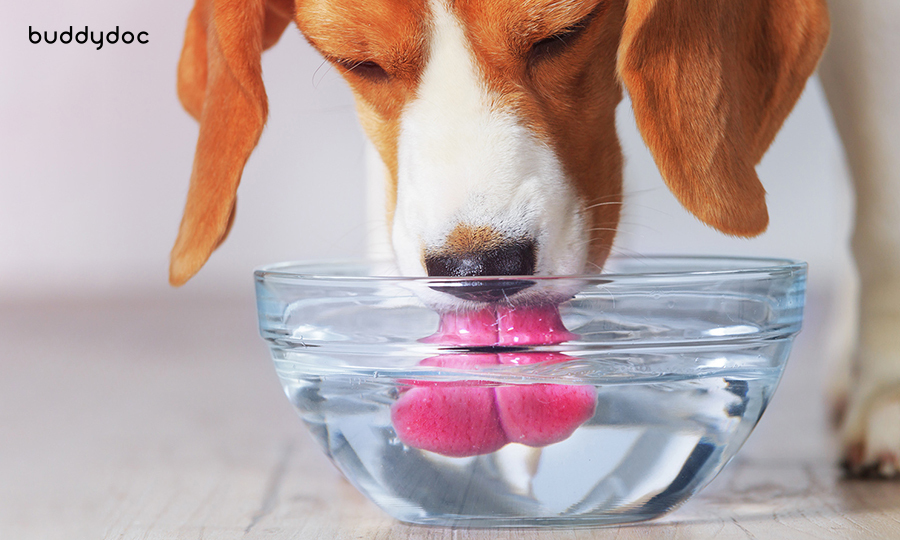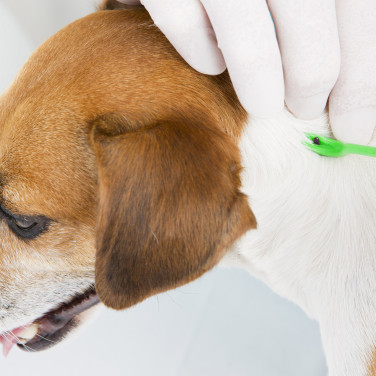SYMPTOMS
Dark Urine in Dogs - What Does the Color of Your Dog’s Urine Mean?
페이지 정보
본문


What does discolored urine in dogs mean?
The color of a dog's urine can vary from yellow to various darker shades. Changes in urine color can be caused by various factors such as changes in water intake, the presence of stones, liver disease, bleeding, exposure to toxic substances, etc. The more common discolorations include dark yellow, brown, red, or pink urine which indicates an abnormal situation worth visiting the veterinarian to determine the exact cause.
What causes urine discoloration in dogs

The causes of changes in a dog's urine color are very diverse:
-
Dehydration
Dehydration can be inferred from the state of a dog's urine. Dehydrated urine appears dark or light yellow. If the urine color does not clear up despite adequate water intake, the cause of dehydration should be investigated.
-
When there is excessive water intake, the color of urine can become close to colorless. A sudden increase in water intake may require investigation for conditions such as diabetes, Cushing's disease, or kidney disease. Excessive water intake can lower the sodium levels in the body, leading to hyponatremia and symptoms such as seizures.
-
Kidney or bladder stones
If there are stones in the kidneys or bladder, the color of a dog's urine may appear brown or pink.
-
Liver disease
If there are problems with the liver, the color of urine may change from dark yellow to brown due to excessive secretion of bilirubin, a pigment found in bile.
-
Pancreatitis is caused by inflammation in the pancreas gland, causing urine to turn dark orange.
-
Muscle damage
Excessive damage to the muscles or the discharge of a mixture of oxygen and myoglobin in urine due to stress can cause the urine to appear orange or brown.
-
Bleeding
Hematuria, which is the presence of blood in the urine, can occur due to causes such as urinary tract infections, stones, clotting disorders, or tumors.
-
Ingestion of toxic substances
If a dog ingests toxic foods such as Tylenol, onions, garlic, etc., the urine may appear dark brown.
Similar symptoms of discolored urine in dogs
Changes in urine color can be visually confirmed and various accompanying symptoms may occur depending on the cause. If dark yellow, brown, red, or pink urine is observed, it is necessary to visit a veterinarian for proper testing to determine the cause.
Risk of discolored urine in dogs
Among the causes of changes in urine color, the ingestion of toxic substances is the most dangerous and can lead to an emergency. Ingesting Tylenol can cause symptoms of poisoning, along with changes in urine color, and can result in conditions such as liver failure, hemolysis, respiratory distress, and cyanosis. It is important to recognize that this is a very critical situation. Ingesting onions, leeks, etc., can destroy red blood cells and lead to anemia as well. For the remaining causes, monitor your pet closely for any other symptoms that may indicate an underlying condition to assess when to see a vet.
Home treatment for discolored urine in dogs
Due to the varying causes of discoloring urine in dogs, it is recommended to visit a veterinarian for testing and prompt treatment for the underlying cause.
Diagnosing discolored urine in dogs

When visiting a veterinarian due to changes in your pet’s urine color, a veterinarian will questions about your pet’s situation such as any recent stressful events, trauma, or ingestion of toxic substances. A physical examination will be conducted, which includes palpating the dog to check for abdominal pain or the presence of lumps. Urinalysis and blood tests can be performed to assess kidney function, sediment content, etc. X-rays can be taken to check for the presence of urinary stones. Ultrasound can be used to detect small stones. Urine tests and bacteria cultures can be conducted to determine if the cause of color change is related to blood, hemoglobin, myoglobin, or bilirubin.
Treatment for discolored urine in dogs
The treatment for changes in a dog's urine color depends on the underlying cause. Bladder stones may require surgical removal. In case of infection, appropriate antibiotics can be prescribed after a susceptibility test. Muscle damage may require fluid therapy and adequate rest. The remaining underlying conditions that cause discolored urine will have their appropriate treatment according to the veterinarian’s judgment.
Preventing discolored urine in dogs
To prevent changes in your dog’s urine color, a clean water source should always be available for the dog to drink from. Preventing diseases such as stones and liver problems is challenging, it is recommended to observe the color of urine and promptly address any issues with your veterinarian.
Find out more about your dog’s symptoms and diseases on the Buddydoc app!

The Buddydoc library is filled with everything you’d want to know about each symptom and disease your pet may experience. If you would like to find out more about the causes, signs, treatments, preventions, and more for your dog’s disease. Try out the Buddydoc app and search for your pet’s symptoms or diseases in the Buddydoc library.













